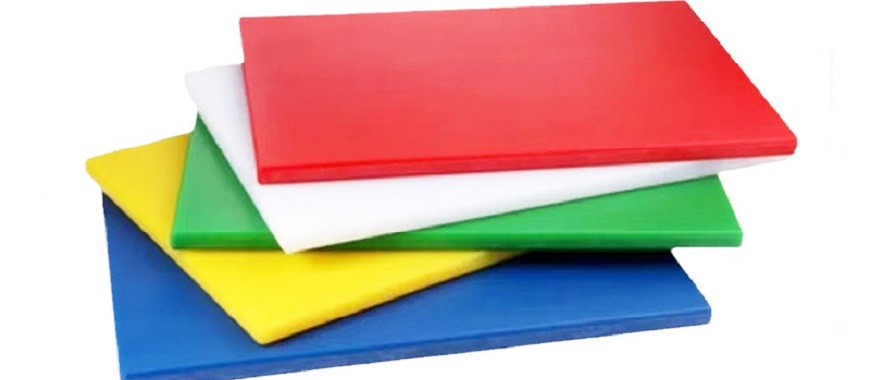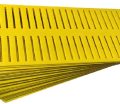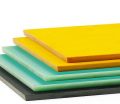
Fiberglass Reinforced Plastic (FRP) is a composite material made from a polymer matrix reinforced with fibers. It is known for its lightweight nature, strength, and resistance to environmental factors like corrosion and UV exposure. Fiberglass reinforced plastic mechanical properties make it a preferred material for applications demanding durability and flexibility. Its ability to withstand extreme conditions has broadened its adoption in various fields. FRP is widely used in construction, marine, aerospace, and automotive industries. In construction, it strengthens structures such as bridges and buildings. Marine applications include ship components and dock grating. Aerospace uses it for lightweight yet robust parts. These examples highlight how fiberglass reinforced plastic mechanical properties meet diverse industry needs efficiently.
Mechanical Properties of Fiberglass Reinforced Plastic (FRP)
Strength and Durability
High tensile strength and fatigue resistance
Fiberglass reinforced plastic mechanical properties include exceptional tensile strength, enabling it to withstand significant stress without breaking. Its fatigue resistance makes it ideal for applications involving repeated loading, such as bridge supports and industrial pipelines. Unlike traditional materials, FRP resists cracking and degradation under prolonged use, ensuring long-term reliability.
Comparison with traditional materials
When compared to steel and aluminum, FRP offers superior strength-to-weight ratios. Unlike steel, it does not corrode, and unlike aluminum, it maintains its integrity under extreme loads. These attributes make FRP a durable choice for environments requiring robust materials. The combination of strength and longevity showcases the importance of fiberglass reinforced plastic mechanical properties in modern engineering.
Lightweight Nature
Density and its implications
The low density of FRP, typically around 1.8-2.0 kg/m³, contributes to its lightweight nature. This makes FRP easy to transport and install, reducing costs in construction and industrial projects. Its lightweight nature does not compromise its strength, offering a balance of efficiency and performance.
Ease of transportation and installation
Fiberglass reinforced plastic mechanical properties make it a convenient material for use in high-rise buildings and offshore platforms. Installation requires less labor and equipment compared to traditional materials, resulting in time and cost savings. These benefits underline the advantages of FRP in a range of industrial applications.
Corrosion and Environmental Resistance
Anti-corrosion properties in harsh environments
FRP’s resistance to corrosion is one of its most valuable attributes. Unlike metals, it does not rust or degrade when exposed to chemicals or saltwater. This makes it ideal for marine environments and chemical processing facilities, where traditional materials would fail over time.
Thermal insulation and UV resistance
Fiberglass reinforced plastic mechanical properties also include resistance to thermal and ultraviolet degradation. It maintains its structural integrity even in high-temperature environments, making it suitable for outdoor and industrial applications. These properties contribute to the long-term performance of FRP in challenging conditions.
Flexibility and Versatility
Modulus of elasticity and elongation
FRP offers moderate flexibility with a high modulus of elasticity, making it suitable for applications requiring stress absorption. This adaptability ensures that fiberglass reinforced plastic mechanical properties meet diverse engineering requirements.
Customization for specific needs
FRP can be tailored to specific needs by adjusting its fiber composition or polymer matrix. This customization enhances its performance for unique applications, such as aerospace components or architectural structures. These advantages demonstrate the wide-ranging capabilities of FRP in addressing complex engineering challenges.
Key Benefits of Fiberglass Reinforced Plastic Ladders Today
Factors Influencing Fiberglass Reinforced Plastic Mechanical Properties
Role of the Polymeric Matrix
How the matrix affects mechanical performance
The polymeric matrix is a critical component that binds fibers together in fiberglass reinforced plastic mechanical properties. It distributes stress evenly across fibers, preventing localized weaknesses. This distribution enhances overall material strength and durability. The matrix also protects fibers from environmental damage, such as moisture and chemicals, preserving long-term performance. Without a well-designed matrix, the full potential of FRP cannot be achieved.
Common types of resins used in FRP
Different resins like polyester, vinyl ester, and epoxy determine fiberglass reinforced plastic mechanical properties. Polyester is cost-effective and suitable for general applications, while vinyl ester offers higher corrosion resistance. Epoxy, the strongest among them, provides superior adhesion and thermal resistance, making it ideal for aerospace and marine uses. Selecting the right resin is a key factor in tailoring FRP properties for specific industries.
Types of Fibers Used in FRP
Glass fibers vs. carbon fibers
Fiberglass reinforced plastic mechanical properties vary based on the type of fibers used. Glass fibers (GFRP) offer excellent corrosion resistance and tensile strength, making them suitable for construction and marine environments. Carbon fibers, on the other hand, provide exceptional stiffness and strength-to-weight ratios, often used in aerospace and high-performance applications.
Mechanical differences between fiber types
While glass fibers excel in affordability and versatility, carbon fibers outperform in strength and lightweight characteristics. This distinction helps industries choose the right fiber type based on application requirements. For example, GFRP is commonly used in structural reinforcements, while carbon fiber is preferred in precision equipment and racing vehicles.
Manufacturing and Design
Influence of manufacturing processes
The manufacturing process plays a significant role in defining fiberglass reinforced plastic mechanical properties. Pultrusion offers consistent cross-sectional shapes, ideal for beams and rods. Molding techniques like compression or injection molding allow complex geometries for components such as pipes and tanks. Each method impacts the strength, uniformity, and cost-efficiency of FRP.
Customization through design
Design flexibility is another critical factor influenced by manufacturing. FRP can be tailored to specific shapes, thicknesses, and reinforcement patterns. This customization ensures that fiberglass reinforced plastic mechanical properties align with project demands, from lightweight aerospace panels to heavy-duty industrial grating. Proper design and manufacturing practices maximize the advantages of FRP in diverse applications.
Durable Fiberglass Reinforced Plastic Knives for Tactical Use
Testing and Evaluation of Fiberglass Reinforced Plastic Mechanical Properties
Standards and Specifications
Commonly used testing standards for FRP
Testing standards are essential for ensuring consistent and reliable fiberglass reinforced plastic mechanical properties. Standardized methods, such as ASTM and ISO guidelines, evaluate FRP’s tensile strength, flexural properties, and impact resistance. These tests ensure the material meets industry requirements, providing confidence in its structural performance. Compliance with these standards is critical for safety and reliability in applications like construction and marine environments.
Importance of meeting industry specifications
Meeting industry specifications is a crucial factor in determining the suitability of fiberglass reinforced plastic mechanical properties for specific applications. For instance, FRP used in bridges must meet stringent load-bearing requirements, while components for chemical plants must pass corrosion resistance tests. Adherence to these specifications ensures that FRP performs effectively under diverse operational conditions. At GangLong Fiberglass, we prioritize quality by following all relevant standards, delivering products that meet rigorous industry expectations.
Extreme Condition Performance
Behavior under high loads and extreme temperatures
Fiberglass reinforced plastic mechanical properties are tested under extreme conditions to evaluate performance limits. FRP maintains its structural integrity under high loads, making it ideal for heavy-duty applications. In high-temperature environments, its thermal resistance prevents material degradation, ensuring consistent performance. These attributes are critical for industries like aerospace, where FRP must endure extreme pressures and temperatures without failure.
Case studies and research findings
Studies highlight how fiberglass reinforced plastic mechanical properties excel in challenging environments. For example, research in offshore platforms demonstrates FRP’s resistance to saltwater corrosion and heavy wave impact. Similarly, tests in industrial plants show its ability to withstand exposure to harsh chemicals over extended periods. These findings illustrate the advantages of FRP, reinforcing its role as a reliable material in demanding scenarios. Our work at GangLong Fiberglass builds upon these insights to deliver innovative, high-performance solutions tailored to specific needs.
Tips for Using Fiberglass Reinforced Plastic Glue Effectively
Final Thoughts on Fiberglass Reinforced Plastic Mechanical Properties
Advantages of Using FRP
Summary of key benefits
The advantages of fiberglass reinforced plastic mechanical properties make it a standout material across diverse industries. Its lightweight nature reduces transportation costs and simplifies installation, making it efficient for large-scale projects. The high tensile strength and durability allow it to replace traditional materials like steel and aluminum in many applications. Furthermore, FRP’s resistance to corrosion and environmental factors ensures long-term reliability, particularly in harsh conditions such as marine or chemical environments.
Long-term cost-effectiveness and maintenance
One of the major benefits of fiberglass reinforced plastic mechanical properties is its low maintenance requirement. Unlike materials prone to rust or wear, FRP retains its integrity with minimal upkeep. This leads to significant cost savings over its lifecycle, making it a sustainable choice for both infrastructure and industrial applications. At GangLong Fiberglass, we take pride in providing FRP solutions that combine strength, efficiency, and economic value, tailored to meet industry demands.
Future Trends in FRP
Emerging technologies and materials
The future of fiberglass reinforced plastic mechanical properties lies in the development of new technologies and composite formulations. Innovations such as hybrid FRP materials, which combine glass fibers with carbon or aramid fibers, enhance strength and reduce weight even further. Additionally, advancements in resin technology are improving FRP’s fire resistance and thermal performance, opening doors to applications in aerospace and energy sectors.
Potential applications in advanced industries
As industries evolve, the demand for materials with superior fiberglass reinforced plastic mechanical properties is growing. Applications in renewable energy, such as wind turbine blades and solar panel supports, are expanding. In transportation, FRP is being integrated into electric vehicle components to reduce weight and increase efficiency. These trends highlight the growing importance of FRP in shaping the future of sustainable and high-performance materials. At GangLong Fiberglass, we aim to remain at the forefront of these developments, delivering innovative solutions for tomorrow’s challenges.
FAQs about Fiberglass Reinforced Plastic Mechanical Properties
Fiber reinforced plastic (FRP) exhibits excellent mechanical properties that make it a versatile material across various industries. It has high tensile strength, allowing it to withstand significant stress without failure. FRP is also lightweight, reducing transportation and installation challenges. Its fatigue resistance ensures durability under repeated loading, making it suitable for long-term use in infrastructure and industrial applications. FRP’s corrosion resistance protects it in harsh environments, such as marine or chemical processing settings. Furthermore, it offers thermal insulation and UV stability, enhancing its performance in outdoor applications. These properties enable FRP to replace traditional materials like steel or aluminum in numerous applications.
Fiberglass reinforced plastic (FRP) combines the strength of glass fibers with the protective qualities of a polymeric matrix. Its properties include exceptional strength-to-weight ratio, ensuring structural stability while maintaining ease of handling. FRP is resistant to moisture, chemicals, and temperature fluctuations, making it a reliable choice for demanding environments. It also offers excellent flexibility, allowing customization for specific shapes and applications. These properties make fiberglass reinforced plastic a go-to material for construction, marine, and transportation sectors, ensuring durability and long-term performance.
Fiberglass provides high tensile and compressive strength, making it a durable material for various engineering purposes. It is lightweight yet offers significant stiffness, enhancing its application in industries like aerospace and automotive. Fiberglass is also corrosion-resistant, ensuring that it performs well in chemical and marine environments. Its thermal and electrical insulation properties add to its versatility, enabling use in specialized applications. Additionally, fiberglass can be customized to meet specific mechanical needs, such as varying thickness or reinforcement levels. These properties highlight its adaptability in modern engineering solutions.
Glass fiber reinforced plastic (GFRP) features a unique combination of strength, lightweight nature, and environmental resistance. It offers superior tensile strength, enabling it to handle heavy loads efficiently. GFRP is also resistant to corrosion, which makes it ideal for use in marine and chemical industries. Its low density allows for cost-effective transportation and installation without compromising durability. Furthermore, GFRP performs well under thermal and UV stress, maintaining its structural integrity in outdoor applications. These mechanical properties have made GFRP a preferred material in construction, automotive, and renewable energy projects.

As the editor of GangLong Fiberglass, I have years of experience and in-depth research, focusing on cable tray products, fiberglass solutions, and grille systems. I incorporate years of industry insights and practical experience into every content, committed to promoting the progress of the industry. At GangLong Fiberglass, my commitment is reflected in every product, from innovative cable trays to durable fiberglass solutions and sturdy grille systems. As an authoritative voice in the industry, my goal is to provide valuable information to professionals and businesses and promote forward-looking solutions.


